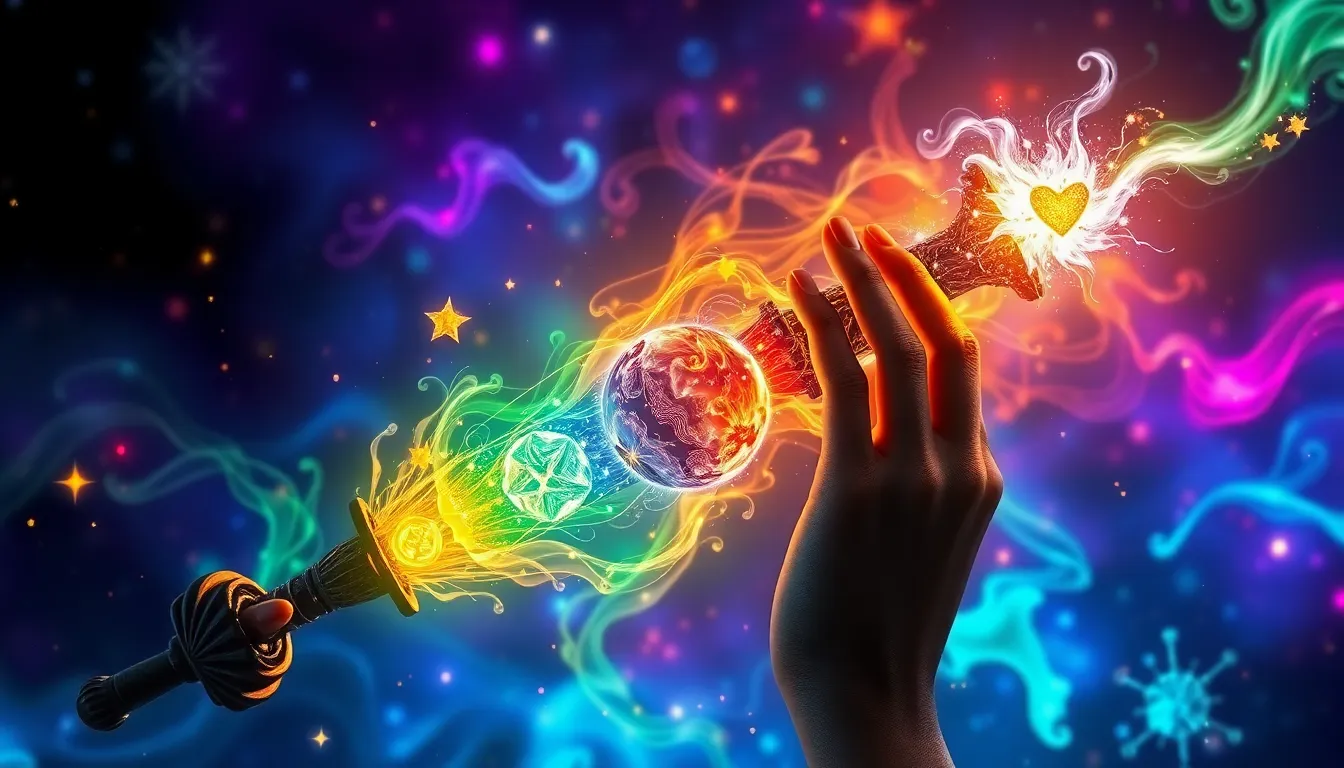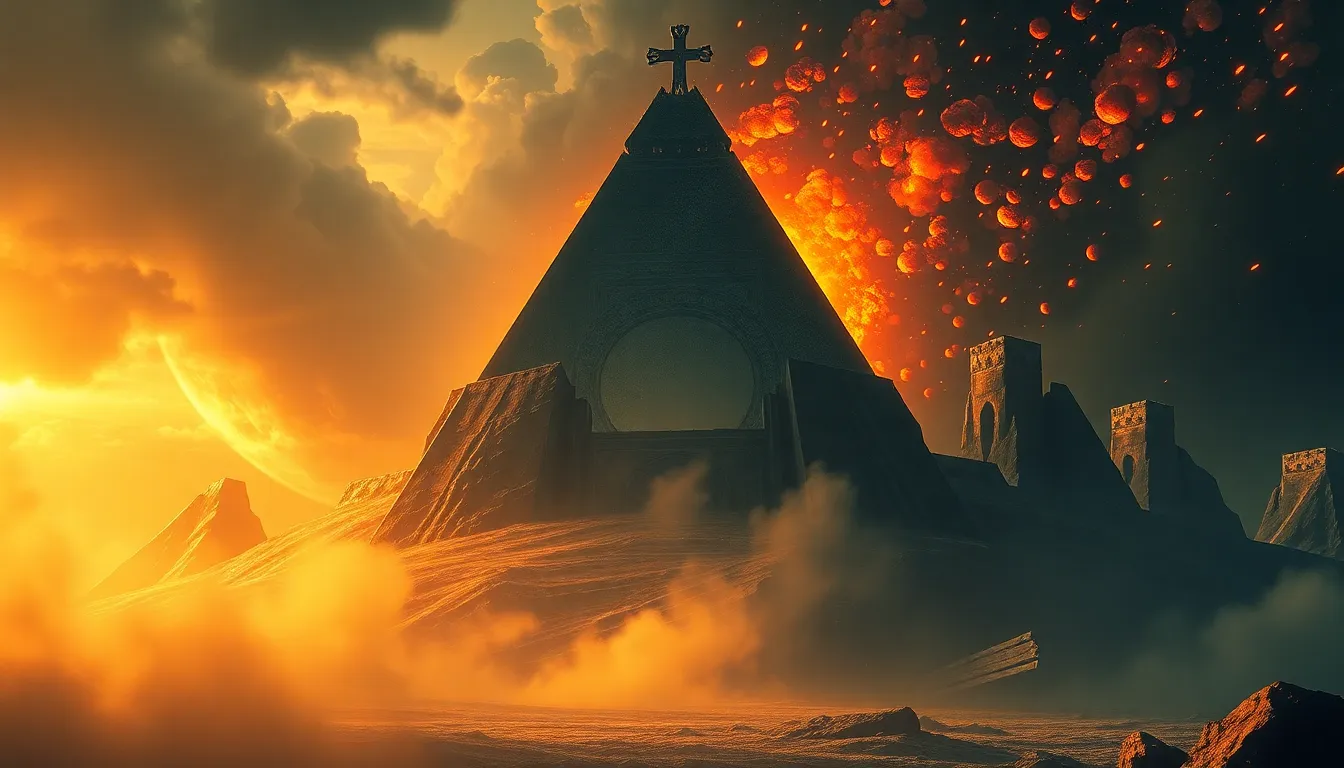The Most Iconic Ancient Deities in Literature and Art
I. Introduction
Ancient deities are the divine beings worshipped by various civilizations throughout history. These supernatural entities often personify natural forces, embody cultural values, and serve as central figures in mythology. The importance of deities in literature and art cannot be overstated; they have provided inspiration for countless stories, artworks, and cultural practices. This article aims to explore the most iconic ancient deities across different civilizations, examining their roles in shaping cultural narratives and artistic expressions.
II. The Role of Deities in Ancient Civilizations
In ancient civilizations, religion and the worship of deities were integral to daily life. These divine figures not only influenced individual beliefs but also shaped entire cultures and societies.
- Influence of religion on culture and society: Deities often served as the foundation for religious practices, rituals, and social norms, guiding the behavior of their worshippers.
- How deities shaped moral and ethical values: Many cultures used the stories of their gods to illustrate moral lessons and ethical behavior, influencing societal values and personal conduct.
- Connection between deities and natural phenomena: Many deities were believed to control elements of nature, such as storms, fertility, and the harvest, establishing a connection between the divine and the natural world.
III. Greek Mythology: The Olympian Gods
The Olympian gods are perhaps the most well-known pantheon of ancient deities. This group of twelve gods and goddesses resided on Mount Olympus and played significant roles in Greek mythology.
- Overview of the Olympian pantheon: The main figures include Zeus, Hera, Poseidon, Athena, and Apollo, each representing different aspects of life and nature.
- Iconic figures: Zeus, Hera, and Athena:
- Zeus: The king of the gods and god of the sky, known for his thunderbolts and numerous adventures.
- Hera: The queen of the gods, goddess of marriage and family, often depicted as vengeful against Zeus’s lovers.
- Athena: The goddess of wisdom and warfare, often portrayed as a protector of cities, particularly Athens.
- Representation in classical art and literature: The Olympian gods have been depicted in various forms, from sculptures to paintings, and frequently appear in literary works such as Homer’s “Iliad” and “Odyssey.”
IV. Egyptian Deities: Symbolism and Significance
Ancient Egypt was home to a rich tapestry of gods and goddesses, each representing different aspects of life, death, and the afterlife.
- Major gods and goddesses: Ra, Osiris, and Isis:
- Ra: The sun god, symbolizing creation and life, often depicted with a falcon head.
- Osiris: The god of the afterlife and resurrection, depicted as a mummified king.
- Isis: The goddess of magic and motherhood, revered for her nurturing and protective qualities.
- Depictions in hieroglyphics and temple art: Egyptian deities are frequently illustrated in hieroglyphics, wall paintings, and carvings in temples, showcasing their importance in daily life and religious practice.
- Influence on literature: The Book of the Dead: This ancient Egyptian funerary text contains spells and prayers to guide the deceased through the afterlife, reflecting the cultural significance of their deities.
V. Mesopotamian Gods: Myths and Legends
Mesopotamia, often referred to as the cradle of civilization, was home to a pantheon of gods that influenced numerous aspects of life.
- Key deities: Enlil, Inanna, and Marduk:
- Enlil: The god of wind and storms, known for his power over the earth and sky.
- Inanna: The goddess of love, war, and fertility, celebrated for her dual nature.
- Marduk: The chief god of Babylon, associated with creation, water, and magic.
- The Epic of Gilgamesh: A literary exploration: This ancient poem features gods and their interactions with humans, exploring themes of friendship, mortality, and the quest for immortality.
- Artistic representations in cylinder seals and reliefs: Mesopotamian art, including cylinder seals and stone reliefs, often depicts their deities in elaborate narratives.
VI. Hindu Deities: The Rich Tapestry of Beliefs
Hinduism boasts a diverse array of deities, each representing different aspects of life, nature, and the cosmos.
- Major deities: Vishnu, Shiva, and Devi:
- Vishnu: The preserver god, often depicted with blue skin and a conch shell, symbolizing his protective nature.
- Shiva: The destroyer and transformer, revered for his role in the cycle of creation and destruction.
- Devi: The goddess representing the feminine divine, manifesting in various forms like Durga and Kali.
- Role in epics: Mahabharata and Ramayana: These ancient texts depict the lives and adventures of deities, providing moral and ethical teachings.
- Artistic expressions in temples and sculptures: Hindu deities are intricately carved into temple architecture and sculptures, showcasing their significance in spiritual life.
VII. Norse Mythology: Gods of War and Wisdom
Norse mythology features a pantheon of gods and goddesses known for their complex personalities and stories.
- Introduction to Norse deities: Odin, Thor, and Freyja:
- Odin: The all-father and god of wisdom, often associated with war and death.
- Thor: The god of thunder, known for his strength and bravery, often depicted wielding his hammer, Mjölnir.
- Freyja: The goddess of love, beauty, and fertility, celebrated for her fierce independence.
- Literary sources: Poetic Edda and Prose Edda: These texts are fundamental to understanding Norse mythology, containing tales of gods, heroes, and the creation of the world.
- Artistic portrayals in Viking art and modern adaptations: Norse deities have inspired a vast array of artistic expressions, from Viking stone carvings to contemporary films and literature.
VIII. African Deities: Diversity and Cultural Impact
Africa is home to a rich variety of deities across its many cultures, each contributing to the diverse spiritual landscape of the continent.
- Overview of various African pantheons: Yoruba, Akan, and others: Different cultures have their unique gods and goddesses, with Yoruba deities like Ogun and Oshun being particularly well-known.
- Oral traditions and their significance in literature: Many African societies rely on oral storytelling to pass down myths and legends of their deities, preserving cultural identity.
- Artistic expressions in masks and sculptures: Deities are often represented in masks and sculptures, used in rituals and ceremonies, reflecting their cultural significance.
IX. The Legacy of Ancient Deities in Contemporary Culture
The influence of ancient deities extends far beyond their original contexts, significantly impacting modern literature, art, and popular culture.
- Influence on modern literature and storytelling: Themes from ancient myths continue to resonate, inspiring contemporary authors and creators.
- Representation in visual arts and popular media: Deities from various cultures are frequently depicted in films, television series, and graphic novels, showcasing their enduring appeal.
<li
![]()


